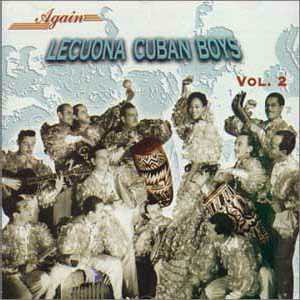10.7.2 Lecuona Cuban Boys

Lecuona Cuban Boys, a prominent Cuban orchestra founded by Ernesto Lecuona in 1932 in Spain. On October 17, the orchestra made its debut at the Migao Theater in Madrid, featuring Oréfiche as pianist, Gerardo Brugueras on double bass, Agustín Brugueras on drums, Alex García on slide trombone, Salazar on trumpet, Adalberto Oréfiche (Chiquito) on saxophone, Alvarado and Carmen Burguette as vocalists, and finally Grecia and Mario, and Carmen and Olano as dance partners. The show featuring these artists, organized by Lecuona, debuted at the Teatro Fígaro.
Many prestigious artists have worked with this group, including Pastorita Imperio, Goyita Herrero, Blanca Negri, Margarita Cueto, Pilar Calvo, Fernando Díaz (Bebo), Jorge Domínguez, Alberto Robagliati, Eduardo Barrachenea, Guillermo Hernández, Ernesto Vázquez (Jaruco), Daniel González, Enrique López, Tomás Ríos, and Oscar Lombardo. This group also accompanied Conchita Piquer, Estrellita Castro, and Pilar López.
Upon Lecuona’s return to Cuba, Armando Oréfiche took over the direction of the Lecuona Cuban Boys. For seven years, they performed on distinguished stages in countries throughout Europe and the Middle East: Spain, France, Switzerland, England, Sweden, Denmark, Norway, Hungary, Austria, Italy, Morocco, Egypt, Monaco, and Belgium; and they also shared the stage with artists such as Tino Rossi, Luciense Boyer, Gertrudis Nielsen, Janne Marie Bourgeois, Maurice Chevalier, Josephine Baker, Raquel Meller, and Pedro Vargas.
They returned to Cuba in 1939. Until 1945, the Lecuona Cuban Boys were a busy period in Cuba and several other countries in the Americas, including Panama, Venezuela, Argentina, Chile, Brazil, and Peru. This last year, they traveled to the United States for the first time, where they performed with resounding success. A year later, with music by Ernesto Lecuona, the orchestra appeared in the Hollywood production “Carnival in Costa Rica.” After this work, differences of opinion began to emerge within the group.
Lecuona Cuban Boys would come under the tutelage of Gerardo Bruguera, after its director Armando Oréfiche left the group and founded another one called Havana Cuban Boys.








